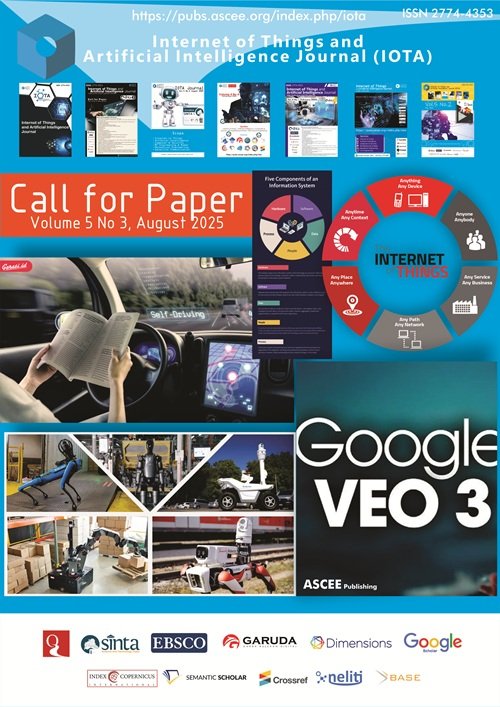The Comparison of the Performance of Telegram and Blynk as Monitoring Media on the Prototype of Internet of Things-Based Soybean Planting System
DOI:
https://doi.org/10.31763/iota.v5i3.990Keywords:
Soy, IoT, Sensor, NTP, Telegram, BlynkAbstract
Indonesia is the country with the second-largest soybean consumption in the world after China. Meanwhile, to meet the needs, Indonesia still depends on imports since the soybean production has still been under the national demand. Therefore, the Indonesian government has included soybeans in Prioritas Riset Nasional. Agriculture in Indonesia is able to use IoT to increase soybean production; therefore, this research has built a prototype of an IoT-based soybean planting system with a soil humidity sensor and network time protocol (NTP) as the tools for automation. Some elements essential to be observed were informed to the user through Telegram and Blynk applications. This study ran well as the humidity sensor NTP timer could control the watering and fertilizing system, and notifications could be sent to the user. From a QoS standpoint, Blynk exhibits a delay of 62 ms, while that of Telegram was 59 ms. Regarding throughput metrics, Blynk’s performance was nearly equivalent to that of Telegram.


